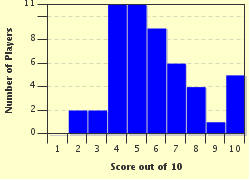Quiz Answer Key and Fun Facts
1. Ojibwe or Chippewa is the name used by Anglo-Saxons and other Native Americans to refer to the tribe. The Ojibwe call themselves Anishinaabeg. What does Anishinaabeg mean?
2. The Anishinabek Nation was first formed through a meeting and confederacy of three Indian nations. What was the name given to this council?
3. The Ojibwe are part of which Native American linguistic group?
4. Prior to European influence, the Ojibwe were farmers and hunters. Which was the wild crop they consistently harvested?
5. Many Native American tribes are noted for their craftwork. The Ojibwe are expressly known for their beadwork, often in floral patterns and their birchbark baskets. They were also responsible for the creation of an item that is used by Anglos and Native Americans alike. What would that be?
6. The Ojibwe are believed to have had first contact with Europeans around 1615 when which explorer made his way to Lake Huron?
7. The Ojibwe were driving farther west. By the 1700s, in quest of land rich in pelts, they battled which nation over territory?
8. The Ojibwe were fierce warriors. They would scalp their enemies but more often they would kill rather than torture. They also practiced what ritual in war?
9. Not many Native American Chiefs receive the same press as Geronimo or Sitting Bull. There was one Ojibwe Chief, however, who was noted for his eloquence. Who was also known as the "Emperor of Sandy Lake"?
10. Another noted Ojibwe was Chief Buffalo (Kechewaishke). He was a signer of the "Pine Tree" Treaty with the U.S. in 1837 when who was the president?
Source: Author
JudithCrafard
This quiz was reviewed by FunTrivia editor
bloomsby before going online.
Any errors found in FunTrivia content are routinely corrected through our feedback system.


